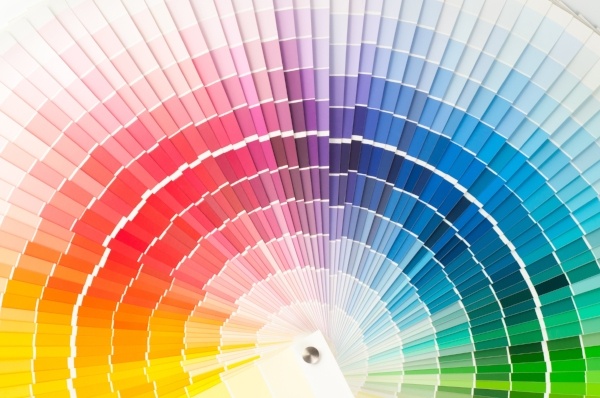7 Elements of Modern Website Design You Need to Know
BACK TO BLOGSModern website design is a relative phrase. Some people might think a website designed in 2010 is modern, while others in the web design field have seen so many new things in the past year, that anything pre-2019 is already outdated.
The thing we notice most is that modern website design doesn’t require or benefit from a ton of bells and whistles. The more simple and clean, the better the user experience is.
Here are seven key elements of modern web design:
1. A Strong, but Limited, Color Palette

This might sound rudimentary, but color schemes and color usage are very important when it comes to modern web design. A strong color palette will help create cohesiveness between everything your business puts out.
Companies who have both primary and secondary colors have more wiggle room to work with when creating new elements for their website, whether it’s the homepage, landing pages, blogs, or a resource database.
However, the number of colors you incorporate in your design is also a very important aspect. Too many colors become visually distracting, so most modern website designs opt for only two or at the most three in their major design elements.
Check out huge sites like Apple and Amazon. You won’t find a rainbow of colors, just one background color (white or black) and one major accent color (silver, yellow, and blue, respectively). Simplifying the color scheme of your site makes it easier to focus, and this is why there are only minimal color combinations in modern website designs.
Bonus tip: If you struggle with everything starting to look repetitive on more content-rich pages, you can experiment with different shades and tints of your current colors. This will add a little variety to your designs while keeping consistent with your brand.
2. Plenty of White Space
This goes along with the last modern website design element, but white space is also very attractive. It doesn’t necessarily even have to be white.
White space is a term used for the amount of “empty” space that acts as a buffer between all the elements on your page, including copy, sidebar, margins, etc. Things should have room to breathe; if your website is crowded, it is very hard to direct the attention of your visitor’s eye.
Purposely designing your website with white space makes for a clean design that is easily digestible and organized. As websites are adapting a more minimalistic style, keeping space open on your page will allow your reader to navigate their way around page with more ease.
3. Relevant Calls-to-Action

As we hinted earlier, converting visitors into leads and customers is also very important to modern website design, and here’s why: Websites are meant to connect you with the people who are interested in your content, products, and services. Once this connection is made, you want to retain some sort of relationship with these visitors.
Things like email subscription forms, free downloadable ebooks or whitepapers, free product forms, free consultations, or other invites are great calls-to-action (CTAs). These should be strategically incorporated into your website design and are very important for gathering the contact information (typically just an email address) of your visitors so that you can continue conversations with them as leads and convert them into customers.
Include relevant CTAs in optimal places throughout your website – at the end of blog posts, in the sidebars, and in your resources page, to name a few.
The next few points discuss important website design elements that actually happen behind the scenes.
4. Clean Backend Coding
This modern website design element is one that you might not notice visually, but one that is probably the most important when it comes to the functionality of your site.
Behind every website is a great deal of coding in the backend that will dictate how your website performs. At our Birmingham office, GForce Web Design has skilled designers who also know how to code a site to function flawlessly, load quickly, and navigate effectively for converting visitors into leads and customers.
Dedicating the extra time for clean backend coding will make it easier to write, read, and maintain how your site functions. Have you ever been digging for something out of your closet, but it’s just too damn messy to find? Like a cluttered closet, if you don’t have clean backend coding, it will only be harder to locate and fix any issues that may come up.
5. Design for the User First
This element of modern website design is exactly what it sounds like: You should design your site for the user, not just to boost your rankings. Companies, out of a sense of desperation to get better rankings, tend to do things that are “good” for Google but bad for the user.
However, this shouldn’t be the hierarchy of importance for website design. A website should be user-friendly before a company should concern itself with ranking higher on a Search Engine Results Page.
Google is smart: it can tell when your users are getting good value from your website because they keep coming back and spending more time on it. Place your content above SEO, at least when first starting off, to optimize your site for the user and build a group of loyal, recurring visitors.
6. SEO-Boosting Elements
While I just mentioned that a website should be designed for the user first, it doesn’t mean that SEO doesn’t matter. There are modern website design elements that can greatly improve the Search Engine Optimization (SEO) of your site. A lot of these are invisible to the naked eye and also appear in the backend coding of your pages and posts.
Design tricks like meta tags, title tags, heading tags, and other HTML coding go a long way in helping your site climb the ranks of Google’s search engine. Make sure you fill out, tweak, and optimize these elements so they are relevant to your site and better your search ranking.
7. Speed Optimization
Optimizing for speed is an imperative design element that should not be overlooked. With today’s technology, people expect things to load immediately, or they’ll probably throw in the towel three seconds later and never return. As a business, you don’t want leads and prospects to think negatively of your brand just because your website is slow.
To make sure your website is fully optimized for speed, here are a few tips:
- Always optimize a photo, no matter how small it is.
- Enable compression so files will be smaller and open quicker.
- Minimize HTTP requests in Google Chrome’s Developer Tools.
- Choose the proper hosting options, whether its shared hosting, VPS hosting, or a dedicated server.
Incorporate these seven elements into your modern website design. Prioritize user-experience, and make sure that you optimize your website for not only its physical design but its functionality too.
With these tips, your company can create a kick-ass website design that will help you attract new visitors, generate leads, and convert prospects into customers.





